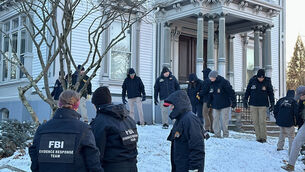Steam leak kills four at nuclear power plant
Two of the injured workers are in a critical condition.
No radiation escaped the plant and there was no need to evacuate the area around the city of Mihama, about 200 miles west of Tokyo.
Mihama's population is around 11,500.
The four dead suffered severe burns, said Takanori Amimoto, at the nearby Fukui state government office. Two workers had critical injuries, while three were in serious condition and two had minor injuries.
Prime Minister Junichiro Koizumi promised a thorough investigation of the accident, which follows a string of safety problems and attempted cover-ups at Japan's nuclear power plants, the source of 30% of Japan's electricity.
Worries about the safety of the country's 52 nuclear power plants have surged in recent years. A 1999 radiation leak north east of Tokyo killed two workers and exposed hundreds to radiation, and three years later an investigation revealed that Tokyo Electric Power systematically lied about cracks in its reactors during the 1980s and 1990s.
Yesterday's leak was caused by a lack of cooling water in the reactor's turbine, said Kimihito Kawabata, a spokesman for the plant's operator, Kansai Electric Power. The steam was believed to be about 518 degrees.
After the accident, Kansai Electric officials found a hole in a condenser pipe, public broadcaster NHK reported. It did not elaborate on the size of the hole, which it said was believed to be the source of the problem.
The company said the plant automatically shut down when steam began spewing from a leak in the turbine building area at the No 3 nuclear reactor in Mihama. The No 3 reactor started operations in 1976.
The Mihama plant's two other reactors were operating normally, officials said.
Mr Koizumi expressed regret at the deaths, saying: "We must put all our effort into determining the cause of the accident and to ensuring safety."
He said the government would respond "resolutely, after confirming the facts".
The United States had a similar accident at the Surry nuclear power plant in southern Virginia almost two decades ago when an 18-inch steel pipe burst and released 30,000 gallons of boiling water and steam, killing four people.
In Japan's fatal 1999 accident, a radiation leak at a fuel-reprocessing plant in Tokaimura, north east of Tokyo, killed two workers and forced the evacuation of thousands of nearby residents.
That accident was caused by two workers who tried to save time by mixing excessive amounts of uranium in buckets instead of using special mechanized tanks.
A string of safety problems and attempted cover-ups since then has undermined public faith in nuclear energy.
In the most recent accident before yesterday, eight workers were exposed to low-level radiation at a power plant in February when they were accidentally sprayed with contaminated water. The doses were not considered dangerous.














